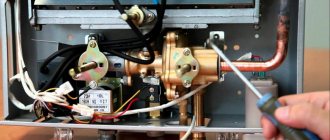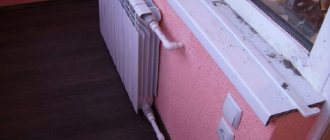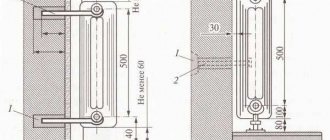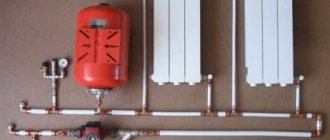Long departures, repairs and other situations force us to take care of safety and protection from various emergencies in advance. However, if no one forgets to turn off the gas, then not everyone guesses to drain the water from the battery. But this threatens with the fact that in the cold or from a water hammer, pipes may burst, thus you will flood your neighbors. To avoid this, it is necessary to drain the water from the battery. How to do this, read the article.
When can the water be drained?
The most popular reason for draining water is when you leave home during the winter. The fact is that water tends to expand, therefore, with temperature jumps due to pressure, it can simply break through the pipe.
You may also need to drain the water when cleaning or replacing the battery. It is important to remember here that if you do not have the opportunity to disconnect the radiator from the riser and replace the device efficiently on your own, then it is better to contact the housing and communal services, HOA or other service company for a centralized drainage of water.
If the battery is damaged, you may also need to drain the water in order not to flood the neighbors. If there is a radiator shut-off valve, then the drain can be done independently. Otherwise, you should resort to the services of a plumber.
It often happens that the heating is turned on, but the battery remains cold. The reason for this is the airlock. To remove the plug, you need to drain the water. If the apartment has a Mayevsky crane, then you can carry out the procedure on your own. The result depends on the position of the battery:
The crane is located slightly higher. First, air will come out, and then water will flow. As soon as water begins to pour, you can turn off the tap. - The battery is installed horizontally. It is necessary to flush out more water as bubbles may remain in the system.
Mayevsky's crane is missing? In this case, you should contact a professional, since self-draining can lead to:
Bay of neighbors. - Leaving the entire entrance or the house without heating. - Filing an application against you in court.
Residents of apartment buildings can drain water exclusively from a certain section of the network and provided that the necessary taps are available. For private houses, another rule applies: before repair work, the entire heating system must be emptied.
To drain the water, you must:
Turn off the boiler supplying electricity and turn off the tap through which water enters it (for private houses). Close the valve outgoing from the riser (for apartments). - Connect a hose to the drain valve. Choose a hose of such a size that it reaches the sewer manifold or toilet bowl. - Open the drain valve. - Wait for the water to drain. - Pour the rest of the water into a container.
After that, the radiator will be completely clean of water, so you can proceed to its inspection or repair work.
Note! Do not leave batteries without water for a long time! This threatens the formation of corrosion and subsequent failure of the entire system.
It would seem that what could be easier than draining the water from the heating system? After all, for this it is enough to connect the drain hose to the battery and open the water. However, an incorrectly performed operation can lead to the most unpleasant results, especially in case of unforeseen situations in apartments, where you can simply pour water over all the neighbors. We will talk about the rules for removing liquid from the heating system in this article.
We drain the coolant in the apartment correctly
Intervene in the operation of the heating system only if such actions are necessary for the normal operation of communication, prevention or elimination of breakdowns. For example, it is impossible to replace a radiator in a room without first draining the fluids. In addition, it is necessary to remove liquid from the pipes in case of leaks, contamination of the system and, if necessary, replace the coolant with a new one.
In an autonomous home heating system, it is easiest to drain the coolant. To carry out such work, no special permits and approvals are required, since even the occurrence of unforeseen situations in this case cannot cause significant harm to people. To replace the coolant, we perform the following work:
- 1. turn off the heating boiler;
- 2. we wait for the complete cooling of water in the system;
- 3. shut off the valve for making up the system with cold water;
- 4. we open special air valves, which are necessarily present in closed communications.
Modern heating networks have drain taps that are located at the lowest point of the system - usually on the return pipe in the immediate vicinity of the boiler. After completing the above operations, connect a hose to this tap through which water can be drained from the circuit. When there is no coolant left in the heat supply network, you can start repairing the communication, replacing its damaged elements, or any other work for which the drain was performed.
It is more difficult to properly drain water from pipes and batteries of an autonomous system if a “warm floor” is installed in the house. In this case, to remove the coolant, you will have to connect a compressor to the inlet of the network, which will help to displace water from the pipes using air pressure. Although it is far from always necessary to completely drain the water from the system. For example, if you need to replace only one heating battery in the house, you can drain the coolant only from it, of course, if the design of the system and the features of its installation allow it.
It is highly desirable to provide for the possibility of draining water from a particular radiator by installing valves and taps.
So that when the described recommendations are followed, replacing the coolant does not cause major problems, it is necessary to prepare a container of a suitable size in advance. All the liquid from the autonomous heat supply should fit into it without a trace. In some cases, you can simply use a long hose that is pulled from the heating drain valve to the street. However, the longer the hose and the older it is, the higher the likelihood of leaks during the repair of the heating network.
It is much more difficult to drain the coolant from the heating system located in an apartment building. If you need to remove water from the communication in order to modernize it, you will have to free the entire riser from the coolant, passing through all apartments located in the same vertical. Such repairs require prior approval from the company serving the heat supply of the apartment building.
The service of draining water from the riser is paid, it is performed by the employees of the responsible company, its cost depends on the time of the repair. Drainage is most expensive in winter during the heating season, and cheapest in summer. Therefore, you should plan in advance for the modernization and maintenance of heating elements.
How to drain water from a battery - technology of work. How much to drain water from the battery
How to drain water from a heating battery in an apartment: what is it for?
Today, unforeseen situations often arise that force you to engage in unusual things, and therefore the question of how to properly drain water from a heating battery is increasingly asked by people who are not specialists in this profile.
Read more about how the process is carried out in the article.
We drain the water from the battery correctly
In case of insufficient heating of the battery in winter, when replacing or breaking pipes due to a temperature jump, it becomes necessary to drain the water from the battery. Almost all the time you have to do this yourself.
How to properly drain the battery? You just need to take into account some points of the process and follow the recommendations of specialists.
First of all, it should be understood that the drainage of water in an apartment building is made from a section of the network, and in private houses the entire system is drained.
Draining water in the apartment
The water in the apartment must be drained as follows:
- shut off the distribution valve that extends from the riser;
- depending on the type of reinforcement, perform certain actions.
If you have a Mayevsky crane, you must unscrew the key with a plastic handle or use a slotted screwdriver.
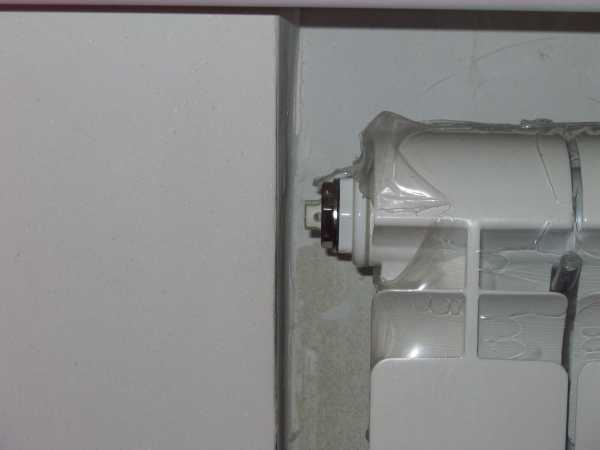
There is a side hole on the battery drain cock, which sometimes faces the wall. It must be covered, otherwise dirty water from the battery system can flood the wall.
Next, you need to substitute the container under the hole and unscrew the screw until the characteristic sound appears - the hiss should soon disappear.
After that, you need to slightly unscrew the screw - until water flows from the hole.
Why is this done? So that part of the air that has mixed with the coolant comes out in the process. When the stream becomes stable, it is necessary to tighten the system valve.
To check the correctness of the above actions, it is advisable to make sure that the previously cold part of the battery has warmed up. If this does not happen, then it is necessary to drain the water again.
In the presence of a conventional tap, a long hose must be connected to the valve, which should be sufficient to the drain.
Then the battery valve must be opened fully to create a strong current inside.
As the speed of the water increases, the air comes out faster, however, the network pressure and the capacity of the airlock are better taken into account.
It is necessary to control the draining process until the cold sections of the battery begin to warm up. This is usually quite long.
In the absence of fittings, it is advisable to resort to the help of specialists, especially if you drain water from the system of cast-iron Soviet batteries.
If there is a cast-iron radiator in the apartment, then it is necessary to unscrew the nut and make sure that the gasket does not leak after tightening it.
Draining water in a private house
With modern sectional batteries, it is necessary to slowly unscrew the top cap by 1-2 turns.
Drain the water in the house as follows:
- disconnect the boiler from the electricity supply;
- turn off the tap through which water flows to the boiler;
- follow the steps given above, depending on the type of reinforcement.
It is imperative to drain water from all devices to which it is supplied. Do not forget about water locks - these are curved sections of drain pipes under various types of plumbing.
Video:
Water can also remain in the system cleaning filters, various types of household appliances (washing machines and dishwashers), including electric water heaters.
Therefore, for the process of draining, it is necessary to provide free access to them. The temperature should be around + 5 ° C.
As a rule, the process of draining water from batteries in an apartment and a private house itself is not particularly difficult.
The procedure can be performed independently, but in the absence of a Mayevsky tap, you should still contact the specialists, otherwise it may end up flooding the neighbors with water, leaving the house for a long time without heating and filing a lawsuit.
Frost protection of the system
There are various options for standby heating systems for houses.They are based on the fact that if the owners of the house are gone for a long time, then the heating system is controlled by electronics.
This is a sensor that is installed in the room and reads the temperature, and a receiver that communicates directly with the boiler. An important condition for such automation is the need for constant access to the Internet.
Another option for frost protection is the use of antifreeze.
However, if the system consists of zinc pipes, then this liquid cannot be used in the process.
Interacting with zinc, antifreeze loses its properties. In addition, it has a heat capacity lower than that of water, therefore, requires the installation of a more powerful radiator and circulation pump.
To prevent residual water freezing, it is recommended to use mixers with ceramic elements and valves with rubber seals in the system.
In addition, it is better to use low pressure polyethylene (HDPE) pipes. They have higher performance characteristics, and when the water freezes in the pipe, complete tightness is maintained. In this case, no damage to the pipe itself is observed.
A few words should be said about the safety of the external water supply system. Correctly chosen depth of soil non-freezing is an important condition for laying a water supply system.
The correct slope of the pipes facilitates an unobstructed backflow of water.
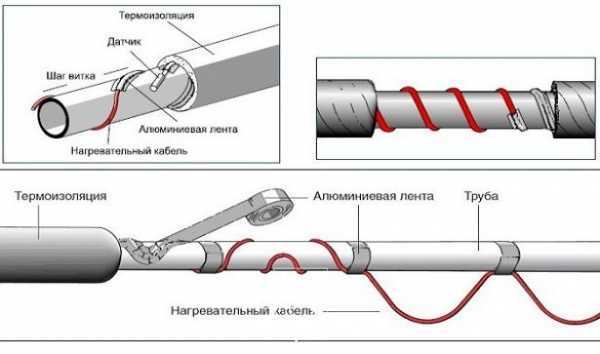

If the pipes go outside, then a heating cable is needed, which allows you to maintain the required temperature in the system and protects the pipes from condensation.
You need to turn it on at a temperature of -5 ° C and regulate the heating. If the temperature outside has dropped below the specified one, and you have not had time to turn it on, then you will have to wait until the formed ice melts.
Proper protection of heating from freezing and proper care of it will help the system to serve you for many years.
Still, it should be said that the whole process of plumbing work takes time and attention and is necessary so that no emergencies arise.
Therefore, if you still have questions about how to properly drain the water from the heating battery, then it is better to contact the specialists.
stoydiz.ru
Methods for draining water from heating batteries in an apartment
Radiator
With the onset of October, the temperature, both outside and in apartments, gradually decreases. Each of us thinks: "The main thing is to hold out until the beginning of the heating season." However, the situation does not change from year to year. The media announces that the heating was started up on time and without delay, but many of the batteries remain cold. It is even more offensive when the warmth still reached the neighboring apartments, but not yours.
The reason for this unpleasant situation is the formation of air jams along the "riser". These plugs clog up the batteries on different floors of the building and lead to the fact that hot water, which carries the long-awaited heat, cannot break through them. There are several ways to solve this problem, which I would like to consider below.
Solutions to the problem
You can eliminate air locks. To do this, it is necessary to deflate and drain the water from the battery, which will fill the vacated space with incoming hot water. It is important to determine who will do this (you or the service provider).
The best option is to leave an application with the MUP or HOA and wait for the locksmiths. However, the wait can take up to several weeks. Many people want to resolve this issue as quickly as possible, so they are independently engaged in heat supply to the apartment.
Advantages and disadvantages of self-draining water
The main disadvantages are the following:
Damage to battery drain mechanisms
As a rule, any equipment tends to "age", and those associated with water also coke over time. If you open the drain mechanisms of the battery, release the air and drain the water on your own, then you may not be able to close them. And this can lead to flooding of neighbors, and, naturally, the heating will disappear in the entire entrance until the malfunction is eliminated.
Loss of water pressure in batteries
When heating is provided by individual boilers, many service organizations prohibit themselves from draining water from the risers. Since when pressure is lost, alarm control sensors begin to signal
rinnipool.ru
How to replace a radiator - dismantling procedure in an apartment building
The easiest way is to replace the radiator in relatively new apartments, in which the utilities are installed correctly, and the builders provide for the possibility of draining the liquid from the system without affecting the common riser. In order to replace the radiator in such an apartment, first close the shut-off valves at the battery inlet, thereby stopping the supply of water to individual sections of the heating network, but without stopping the circulation of the liquid as a whole. Your further actions on working with the coolant depend on whether the system design includes outlet valves on the radiators. If there are taps, then you just need to connect a hose to them and drain the liquid into a large container.
One-pipe heating must be handled differently. You will first have to open the bypass valve, which is a backup path for the coolant used to replace the radiator. Only after opening the bypass valve can the shut-off valves on both sides on the battery itself be closed.
After that, you can start disconnecting the radiator from the heating network in the house. When a new one is installed instead of a broken battery, it is necessary to check the sealing of the connection, check the tightening of the locknuts and only then gradually open the valves at the inlet and outlet of the radiator. At the end, you can open the Mayevsky tap and slowly close the bypass so that the radiator fills up gradually. Slow filling of the system will prevent water hammer, and air from the battery will escape through the Mayevsky valve. The tap can be turned off after water begins to flow through it.
Draining a heating riser in a private house
First of all, it should be understood that the drainage of water in an apartment building is made from a section of the network, and in private houses the entire system is drained.
Draining water in the apartment
The water in the apartment must be drained as follows:
- shut off the distribution valve that extends from the riser;
- depending on the type of reinforcement, perform certain actions.
If the apartment is located in a multi-storey building, then such an operation is complicated by several factors. When carrying out repairs or modernization of the heating system, it is necessary to drain the water from the riser. To do this, you need to agree with the company that serves the heating of the house. Every resident should know where to go about heating in case of problems.
For this, ball shutoff valves are installed at the inlet and outlet of the radiators. A spare pipe is installed - a bypass. The taps allow you to shut off the coolant supply.
How to drain the water from the heating battery - this question arises when it is necessary to replace the radiator or remove it for repair (prevention). Drainage of water from a heating battery is usually carried out according to a general algorithm, depending on the presence of shut-off valves and the type of heating system in which the device is installed.
We solve problems with the heating network
Problems with utilities happen quite often, however, to repair the heat supply, it is not at all necessary to always remove the coolant from the pipes. The most common heating problems include:
- air ingress into the system circuit;
- pollution;
- insufficient diameter of the pipes of the system;
- low power of the circulation pump;
- lack of check valves in complex networks;
- making various mistakes during installation work.
Problems in the heating network are often related to each other. For example, the murmur of water in pipes can be caused both by the ingress of air into the pipes, and by poor sealing of the joints, the presence of leaks. In order for the system to provide the apartment with the necessary amount of thermal energy and not cause discomfort among users, it must be constantly checked. Monitor the quality of the connection, bleed air through the Mayevsky taps, and if you cannot find the problem on your own and get rid of it, contact the professionals for help.
Timely call of specialists upon detection of the slightest signs of problems in the operation of heating will allow avoiding serious malfunctions, for the elimination of which you will have to spend your money and time, obtain permits to drain water from the riser and coordinate your work with the responsible authorities.
Heat / Heating batteries
It became cold in the apartment in winter. Where to go for an ordinary Russian who is not burdened with special knowledge and skills? What to do if there is no opportunity or strength to take and change outdated radiators yourself? Who can or should help in such an unpleasant situation? This material is devoted to the answers to these and other difficult questions.
As practice shows, and numerous forums on the network confirm, it is almost futile to apply for a free replacement of radiators in housing and communal services today. There, most likely, they will refuse, referring to the current regulations. Naturally, the lawyer of the management company will select exactly those regulations that will play into the hands of utilities. The legislation on this issue is rather controversial, so it will not be difficult to find such documents. Of course, if the tenant is a qualified lawyer, after a few years of litigation it is possible and will achieve that the replacement of heating batteries is made free of charge, the rest of the citizens are better off relying on themselves.
Battery replacement: who can help?
So, let's answer the first question: Who can help a person? There are two options available: contact the HOA (ZhEK, DUK, DEZ or a similar structure) or hire a third-party company. In the first case (if everything is formalized - through a contract) there is a small guarantee that everything will be done more or less efficiently, albeit not quickly, and utilities will be responsible for the consequences of poor-quality installation.
In the second, you can run into a one-day company that will require an advance payment, present the final high costs, will not ensure the reliability of installation and will disappear without any guarantees. This means that it is necessary to focus not on the price of the service, but on other factors: the duration of the company, the presence of positive reviews and recommendations (especially from friends).
This is especially true, since the range of prices in the market for services for replacing heating batteries is quite large. Some companies offer a low cost of work (from 1,500 rubles per point), but disclaim any responsibility for the further operation of heating devices or provide a short warranty period. Other organizations describe in detail all the components of their services, guaranteeing high quality installation and components. At the same time, a higher price (from 5000 rubles) is accompanied by a long warranty period for installation work.
Battery replacement: drain water
Regardless of who is chosen by the contractor to install the radiators, before installation, you need to drain the water from the riser of the heating system. Indeed, according to the rules of technical operation of thermal power plants, specially prepared deaerated water under pressure must always be in the heat supply system.It is usually disposed of in the basement of an apartment building by a local plumber.
There are two ways to solve this problem. The first is to contact the management company, where, after payment at the approved hourly price, a locksmith will be sent at the appointed time, who will drain the water from the system. You can, of course, do this by contacting a "respected" specialist directly, but then, if problems arise, they will need to be solved independently.
The second way is more convenient. If the replacement of heating batteries is carried out by a specialized company, its representatives, in most cases, will themselves resolve all issues with the housing office. Payment for the drained water will be included in the cost of dismantling the old radiators. Note that the cost of emptying the riser is not regulated by the state and depends entirely on the costs of the managing organization. Messages on the forums indicate that the amount ranges from 500 rubles to several thousand (especially in winter).
By the way, it is forbidden by law to drain water from the heating system at a negative temperature of 30 degrees and below. In reality, the DEZ may refuse to turn off the riser already at minus 10. The maximum duration of the heating shutdown in winter should not exceed three hours, but for a prepared high-quality installation, this is quite enough. Of course, if a trusted company is chosen for the job, and not a random "master".
Battery replacement: what to look for during installation?
Now let's talk about the installation process. Regardless of the contractor chosen, the owner should know the main stages of work on replacing heating batteries. As a rule, the technology consists of dismantling the old radiator, mounting new sections, preparing connections on the riser and installing new pipes. The owner of the living space is strongly recommended to familiarize himself in advance with all the recommendations of the manufacturer of new sections for the installation of his products.
Sometimes careless workers, after dismantling the old battery, do not remove its fasteners and hang new sections on them. This is not recommended. Most likely, the old brackets have lost their former reliability over time and can fail at the most unexpected moment. It is better to use the brackets that come with the radiator for fastening.
If an inexperienced beginner can cope with dismantling the old battery, then changing the distance between the upper (incoming) and lower (return) pipes to the battery on the riser is a task only for an experienced specialist. The fact is that the pipes running from the riser to the radiator should be parallel to the floor or may have a bend towards each other, but not vice versa. Otherwise, the residents are provided with airing in the battery or pipe, deterioration of heat transfer and other "surprises".
In addition, you must remember that the radiator must be installed strictly horizontally and parallel to the wall. The standard battery is hung on three brackets: one at the bottom and two at the top (they bear the main load). The lower one serves to prevent temperature fluctuations. If there are more than 12 sections, then another bracket is added at the top. The distance between the top of the battery and the bottom of the window sill should not be less than 10 cm, otherwise the heat curtain in front of the window will be insufficient.
Despite the love of housewives for wide window sills, you need to make sure that the radiator is not completely hidden by the window sill. From the floor to the sections - 7-12 cm. From the battery to the wall at least 2 cm. In these conditions, the heat transfer will be maximum. Let's share one more useful tip: it is better to glue foil cardboard on the wall behind the radiator - it will reflect heat into the room, which is usually spent on useless heating of the outer wall.
You need to pay attention to the sealants that are used when replacing heating batteries.It is possible that the installer will use ordinary cheap silicone for windows, designed for a different temperature regime. During installation, this is not critical, but when the heating is turned on, then the unsuitable sealant will melt and the battery will flow. The same applies to shut-off valves. A penny saving on branded taps can turn into an accident and a flood of neighbors.
One more thing. It is not necessary to remove the packaging film from the radiator until the end of the installation activities - otherwise, damage to the outer coating is possible.
Battery replacement and flood warranty
Everything. Finally, all the hassle is over and brand new radiators are flaunting in the apartment. And how to protect yourself from possible troubles associated with leaks, breakouts and accidents? After all, the neighbors flooded with boiling water from below will not understand that a brand new tap burst, which turned out to be a fake for the products of a well-known company, or poorly assembled batteries flowed. They will demand compensation for material and moral damage from the owner of the apartment. And they will be right.
You need to think about this before starting all work. Then it will be too late. You need to start from the point of sale where the battery or sections and valves are purchased. As a rule, the store's guarantee is about a year, although the manufacturer gives a guarantee for high-quality European products for up to 10-15 years. It is worth asking the seller about the warranty conditions, what stamps are required in the warranty card and who has the right to carry out installation.
Next, you need to choose a specialized company that has permission to replace heating batteries. Otherwise, the store will be able to refuse to fulfill the warranty promises due to "unqualified installation", since the casual craftsman is not a specialized organization. A prerequisite is the conclusion of an installation contract, where the terms of performance, liability for violation of the conditions and warranty obligations must be stipulated.
All monetary relations must also be formalized with payment documents, upon completion of the work, an acceptance certificate must be signed. Carefully read all the clauses of the contract regarding compensation for damage, since usually the warranty covers only work on installing batteries and does not cover compensation for damage to injured neighbors.
In order for material compensation in the event of an accident to be entrusted not to the owner of brand new batteries, you need to either provide for the necessary clause in the contract with the contractor, or insure your civil liability to neighbors in case of any surprises related to plumbing and heating.
Let's start with the most important thing: you cannot drain water from the batteries and leave the system without water for a long time! From this, the batteries simply begin to rust and fail faster. You should drain the water from the system when it is necessary to carry out scheduled work to clean the system or you have any kind of emergency.
Some heating problems that do not require draining the water
Most often, heating problems are associated with the fact that water does not circulate in the heating system, for various reasons.
There are many reasons, and the most common are the following:
Many irregularities in heating systems are interconnected, for example, water gurgles in the heating pipes. This phenomenon can cause discomfort and complaints - the radiators in the house make noise. Each person perceives the sounds that the heating system can make differently. Someone thinks that the heating is gurgling, another perceives these sounds as a hum. Unpleasant sounds include knocking in radiators during system operation.
Noises in heating circuits are phenomena of the same order and there are many reasons for them:
The reasons listed are the most common.In any case, if there are various unpleasant noises in the heating system, which were not there before, you need to carefully inspect and analyze the operation of the circuit. After establishing the localization of the malfunction, it must be eliminated.
But if it does not work out on your own to find and eliminate the malfunction, then you need to contact the specialists.
Let's start with the most important thing: you cannot drain water from the batteries and leave the system without water for a long time! From this, the batteries simply begin to rust and fail faster. You should drain the water from the system when it is necessary to carry out scheduled work to clean the system or you have any kind of emergency.
Planned repair
Do you want to clean your radiator? Should I change to a newer model or vice versa (because, in your opinion, they are better)?
If you live in a private house, there is no problem. Just do not forget that it is better to fill in the system right away and make sure that nothing is flowing anywhere.
If you live in an apartment and you have the opportunity to disconnect from the riser and change the battery yourself - do it. If not, it is better for you to contact the organization that serves the heating system of your home so that its employees turn off the heating system and release water from it centrally.
Material in the topic - (detailed step-by-step instructions are provided).
Abnormal situation
By an abnormal situation, we mean a case when the battery has leaked. Again, if there is a tap that disconnects the battery, disconnect and drain, if not, you cannot do without calling a plumber.
The battery does not heat
Cold water in the battery, although the heating was turned on a long time ago? Hence,. In theory, your radiators should be equipped with a Mayevsky crane. If your battery is installed correctly (the angle in which the tap is installed should be slightly higher), then when you open the tap to bleed excess air, you only have air and will come out; as soon as the water has gone (do not forget to immediately substitute the jar), it means that the air has left, and there is no more plug. If the radiator is completely horizontal, you may need to drain more water.
The reefar radiator has special faucets for draining
Mayevsky's crane not installed? Perhaps, in this case, it is better to consult a specialist after all. Why?
Equipment tends to fail over time. Imagine that you managed to cope with coking and drain the water. But to close them - no longer.
Can you imagine the consequences of this?
- First, you will flood the neighbors, and you still have to call the locksmith to turn off the heating in the entire house.
- Secondly, you will leave the whole house (or, at least, the entrance) without heating for a sufficiently long period - until the consequences of your "self-activity" are eliminated.
- In addition, if heating in your house is provided by an individual boiler, then in the contract you have concluded with the service organization, it is indicated that it is forbidden to drain the water yourself. This is due to the loss of the required pressure level, which is signaled by special emergency sensors.



